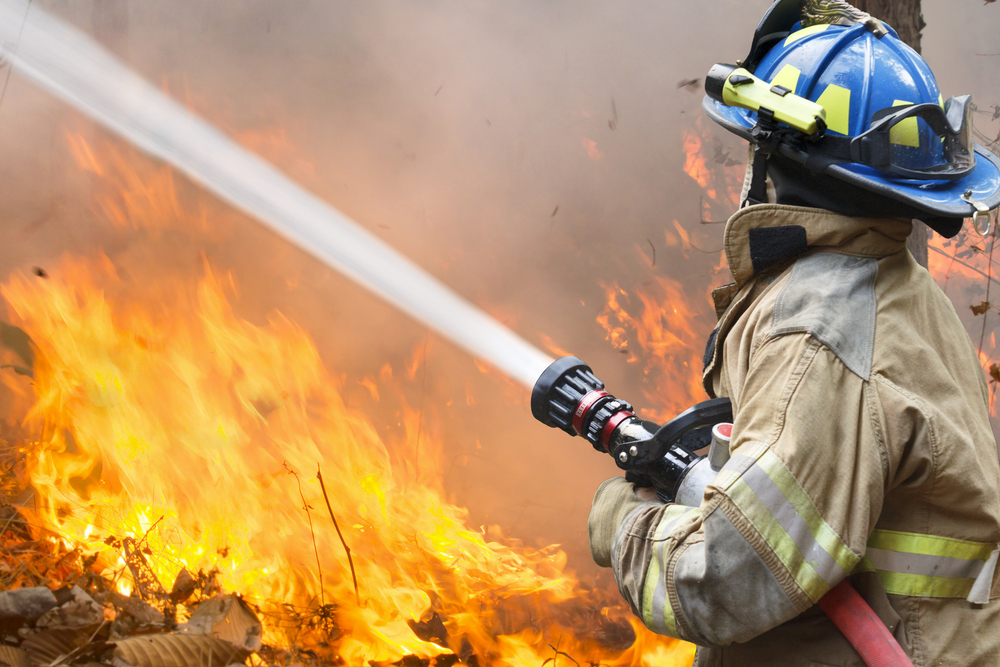Earlier this month, approximately 80,000 residents of Fort McMurray in Alberta, Canada were forced to evacuate their homes due to the continued spread of a wildfire that is now burning an area estimated at approximately 1860 square miles. And just last week it was announced that the same fire had spread into the neighboring province of Saskatchewan.
This wildfire has been so sustained and has grown so large that it’s made international headlines. It’s estimated that the soonest all residents displaced by the fire will be able to return to their homes is June 15, and even that is conditional and based on the situation improving extensively.
Wildfires like this one in Canada are terrifying for their unpredictability and their almost unlimited potential for damage. Unfortunately, they’re more common than you’d anticipate. According to the EPA, the National Interagency Fire Center has documented an average of 72,000 wildfires per year since 1983. And that number could continue to rise. A 2008 study released by the National Wildlife Federation states that global warming has drastically increased the probability of wildfires in the western United States. There are a variety of reasons for this increase including:
- Longer fire seasons
- Drier conditions
- More fuel for forest fires
- Increased frequency of lightning
The Need for GEOINT in Command and Control
One of the ways that organizations can better prepare is to explore innovative new uses of existing technologies to better respond and fight wild fires. In an article in the nationally-distributed Canadian newspaper, the Globe and Mail, earlier this month, reporter Affan Chowdhry, interviewed Rick Swan. Rick is the director of wildland firefighting safety and response at the International Association of Fire Fighters in Washington, D.C. and previously spent 33 years fighting fires California.
What really stood out in Rick’s interview was just how essential GEOINT and command and control are in the fighting of a wildfire – both for firefighter safety and for effectively battling a blaze. When asked about how to keep firefighters safe in the face of a massive wildfire, Rick answered:
“…as the person who is responsible for a number of resources on a section of the fire, your eyes are not focused down on the tactical level; your eyes are focused on what is around you, because you are the eyes and ears for those people that are performing that tactical duty. And you’re looking out ahead of the fire, you’re looking at what’s behind it. You’re looking out for the potential of other issues coming up as far as access and water supplies and safety areas and safe refuge areas that you can deploy into if you needed to.”
The ability to see the entire scope of a fire and see the full, high-level picture, decision makers and senior leaders can ensure that no firefighters get surrounded, that they’re not cut off from necessary supplies and that the right citizens are being evacuated at the right time. This intelligence guides the movement of firefighters, which citizens are evacuated and dictates strategy.
The Emerging Role of Satellite-Connected UAVs in Forest Fires
Traditionally, GEOINT (geographical intelligence) has been gathered by helicopters. Unfortunately, the average helicopter used in this capacity can only stay in the sky for an average of two hours and could unnecessarily put pilots in danger. For this reason, a new weapon is being put into service in the battle against wildfires – satellite-connected UAVs.
In 2013, a Predator UAV was able to help California firefighters battle the Rim Fire burning away Yosemite National Park. The MQ-1 Predator drone was on loan from the California National Guard, and was capable of delivering real time video intelligence of the fire for a total of 22 hours at a time. This wasn’t the first time a drone was used in response to a wildfire. Previous fires in 2008 and 2009 also utilized drones to determine hotspots and provide intelligence to decision makers.
The MQ-1 Predator is capable of delivering the real-time, HD video intelligence that firefighters and emergency response personnel need to battle fires effectively, while protecting their firefighters. They also eliminate the need to put pilots at risk by forcing them to pilot aircraft around raging wildfires. It would not be surprising to see them become a steadfast and integral part of fighting wildfires now and into the future.
Utilizing COMSATCOM ensures that government organizations don’t have to pay for the construction and launch of their own dedicated satellites for the operations of drones in firefighting efforts – a cost that would be almost impossible for them to accommodate. COMSATCOM also ensures that the high-bandwidth, low-latency connections that these agencies need are available when and where they’re required.
UAVs, or unmanned aerial vehicles are an incredible new tool in the battle against wildfires. Their introduction to these emergency scenarios couldn’t be timed any better, as reports indicate that climate change and other factors could increase the frequency and ferocity of wildfires. COMSATCOM will continue to deliver the connectivity necessary to make these tools available to firefighters and first responders.
